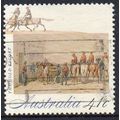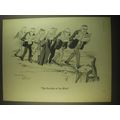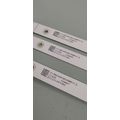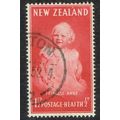Peacehaven, E Sussex - The Meridian Line Marker - local postcard c.1980s
- Condition : Used
- Dispatch : 2 Days
- Brand : None
- ID# : 110261369
- Quantity : 1 item
- Views : 369
- Location : United Kingdom

- Seller : justthebook (+1703)
- Barcode : None
- Start : Fri 21 Jun 2013 00:23:31 (BST)
- Close : Run Until Sold
- Remain : Run Until Sold
More Listings from This Seller view all
Seller's Description
- Postcard
- Picture / Image: The Meridian Line Marker, Peacehaven, East Sussex
- Publisher: East Sussex Federation of Women's Institutes / printed by Judges of Hastings
- Postally used: no
- Stamp: n/a
- Postmark(s): n/a
- Sent to: n/a
- Notes / condition: slightly larger card
Please ask if you need any other information and I will do the best I can to answer.
------------------------------------------------
Postage & Packing:
UK (incl. IOM, CI & BFPO): 99p
Europe: £1.60
Rest of world (inc. USA etc): £2.75
No additional charges for more than one postcard. You can buy as many postcards from me as you like and you will just pay the fee above once. (If buying postcards with other things such as books, please contact or wait for invoice before paying).
Payment Methods:
UK - PayPal, Cheque (from UK bank) or postal order
Outside UK: PayPal ONLY (unless otherwise stated) please. NO non-UK currency checks or money orders (sorry).
NOTE: All postcards are sent in brand new stiffened envelopes which I have bought for the task. These are specially made to protect postcards and you may be able to re-use them. In addition there are other costs to sending so the above charge is not just for the stamp!
I will give a full refund if you are not fully satisfied with the postcard.
----------------------------------------------
Text from the free encyclopedia WIKIPEDIA may appear below to give a little background information (internal links may not work) :
*************
Peacehaven (formerly known as New Anzac-on-Sea) is a town and civil parish in the Lewes district of East Sussex, England. It is located above the chalk cliffs of the South Downs approximately six miles (9.7 km) east of Brighton city centre, on the A259 road. Its site coincides with the point where the Greenwich meridian crosses the English south coast.
There is a Bronze Age barrow (burial mound) very close to the cliff top, which is currently[when?] under investigation by local societies.[3] The barrow represents evidence of the occupation of Peacehaven at least 3,500 years ago. A 2007 excavation of the new Bovis Homes site to the west of Peacehaven Community School's playing fields unearthed an astonishing range of evidence for a prehistoric settlement throughout the Bronze and Iron Ages.
Peacehaven was established in 1916 by entrepreneur Charles Neville, who had purchased land in the parish of Piddinghoe; he then set up a company to develop the site (he also eventually built nearby towns Saltdean and parts of Rottingdean).[1] He advertised it by setting up a competition in the Daily Express to name the development. The newspaper concerned, the Daily Express, sued Neville over the competition, holding that it was a scam, since he was offering ""free"" plots of land in the town as runner-up prizes but issuing them only on the payment of a conveyancing fee. The name of the winner who chose the name 'Peacehaven' was Ethel Radford from Leicestershire. The newspaper won the case, but the publicity brought the scheme to a large audience. The idea was then to sell plots of land cheaply for people to build on themselves. Initially the town was New Anzac-on-Sea but less than a year later in 1917 it was renamed Peacehaven.[4]
The town was originally formed for retiring WWI veterans in order for them to escape and recover from the effects of the war. The idyllic setting, sea air and simple lifestyle were thought to have aided good health. The land was also cheap and, as a result, working class families from the city started to purchase plots and gradually build makeshift homes for weekends and holidays. This movement of frontier style buildings made with whatever materials were available at the time was termed as the Plotlands movement. Inhabitants felt a sense of freedom in living off what they needed and enjoying a simpler life away from the busy, polluted city. The Plotlands provided the working class an opportunity that might not have been available otherwise. [5]
By 1924 there were 3,000 people living in Peacehaven. Original houses were often very temporary affairs (some were old railway carriages). Others were constructed from former army huts, brought from North Camp near Seaford, a few of these still survive, having been given an outer concrete block wall (they can be identified by their oblong shape that tends to be end on to the road). Eventually the local council invested in water and electrical services and so people started to build more substantial houses. After WWII, the local council tintroduced a zoning scheme in order to distinguish areas for improvement along the coast road. In 1974 the Town Center Map and Action Plan was formed to aid development.
The saying “Dog Off” is thought to have originated in Peacehaven. Used as a noun, adjective as well as an insult, a “Dog Off” refers to someone who leaves the company of one friend to join the company of another friend unexpectedly due to the proposal of a better offer. The transposed friend is said to be a “Dog Off”. This is a local saying that has grown in stature and is now recognisable nationwide as well as being heavily used in Three Bridges, West Sussex.
type=printed postcards
theme=topographical: british
sub-theme=england
county/ country=sussex
number of items=single
period=1945 - present
postage condition=unposted
Listing Information
| Listing Type | Gallery Listing |
| Listing ID# | 110261369 |
| Start Time | Fri 21 Jun 2013 00:23:31 (BST) |
| Close Time | Run Until Sold |
| Starting Bid | Fixed Price (no bidding) |
| Item Condition | Used |
| Bids | 0 |
| Views | 369 |
| Dispatch Time | 2 Days |
| Quantity | 1 |
| Location | United Kingdom |
| Auto Extend | No |



 for 1 item(s)
for 1 item(s)















